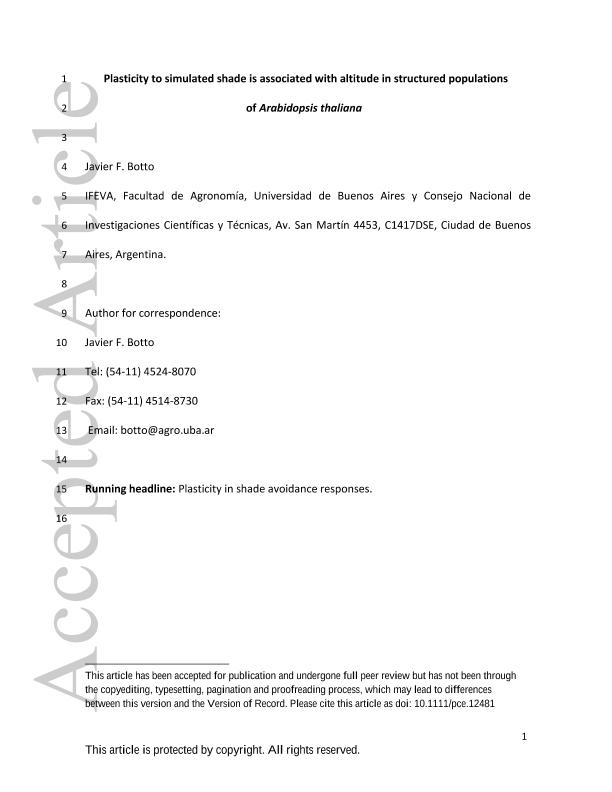Artículo
Plasticity to simulated shade is associated with altitude in structured populations of Arabidopsis thaliana
Fecha de publicación:
14/02/2015
Editorial:
Wiley Blackwell Publishing, Inc
Revista:
Plant, Cell and Environment
ISSN:
0140-7791
Idioma:
Inglés
Tipo de recurso:
Artículo publicado
Clasificación temática:
Resumen
Plants compete for photosynthesis light and induce a shade avoidance syndrome (SAS) that confers an important advantage in asymmetric competition for light at high canopy densities. Shade plasticity was studied in a greenhouse experiment cultivating Arabidopsis thaliana plants from 15 populations spread across an altitudinal gradient in the northeast area of Spain that contain a high genetic variation into a reduced geographical range. Plants were exposed to sunlight or simulated shade to identify the range of shade plasticity. Fourteen vegetative, flowering and reproductive traits were measured throughout the life cycle. Shade plasticity in flowering time and dry mass was significantly associated with the altitude of population origin. Plants from coastal populations showed higher shade plasticity indexes than those from mountains. The altitudinal variation in flowering leaf plasticity adjusted negatively with average and minimum temperatures, whereas dry mass plasticity was better explained by negative regressions with the average, maximum and minimum temperatures, and by a positive regression with average precipitation of the population origin. The lack of an altitudinal gradient for the widest number of traits suggests that shade light could be a driver explaining the distribution pattern of individuals in smaller geographical scales than those explored here.
Archivos asociados
Licencia
Identificadores
Colecciones
Articulos(IFEVA)
Articulos de INST.D/INV.FISIOLOGICAS Y ECO.VINCULADAS A L/AGRIC
Articulos de INST.D/INV.FISIOLOGICAS Y ECO.VINCULADAS A L/AGRIC
Citación
Botto, Javier Francisco; Plasticity to simulated shade is associated with altitude in structured populations of Arabidopsis thaliana; Wiley Blackwell Publishing, Inc; Plant, Cell and Environment; 38; 7; 14-2-2015; 1321-1332
Compartir
Altmétricas




